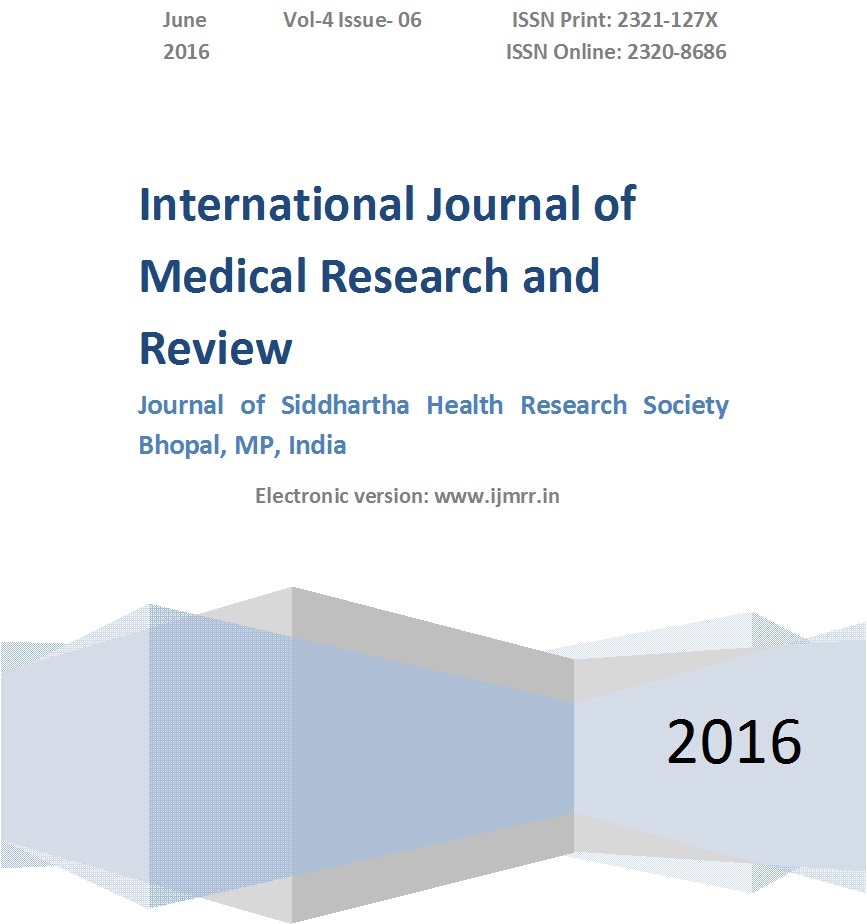Additive effect of butorphanol in supraclavicular brachial plexus block
Abstract
Introduction: Increasing the quality of regional anaesthesia has always been an area of interest for anaesthesiologist. Butorphanol is a synthetic opioid analgesic having partial agonist at μ & agonistic activity at kappa opioid receptor. It use has been done as a single drug as well as in combination with a local anaesthetic for axillary brachial plexus blockade.
Material and Methods: 60 Patients were allocated randomly into one of the two groups of 30 patients each to receive supraclavicular brachial plexus block. In Group B, 30 ml of 0.5% bupivacaine hydrochloride plus 1ml normal saline and in Group BB, 30 ml of 0.5% Bupivacaine hydrochloride plus 1ml butorphanol (2mg). Onset time of sensory & motor block, duration of motor block & post operative analgesia was observed.
Results: The mean duration of sensory block was 4.27 ± 0.51 hrs in group B and 9.10 ± 0.71 hrs in group BB and mean duration of motor block was 3.57 ± 0.56 hrs in group B and 5.13 ± 0.51 hours in group BB. The difference in the two groups was found to be statistically highly significant (< 0.001). The duration of post operative analgesia was 5.27 ± 0.77 in group B and 11.37 ± 0.85 in group BB (p < 0.001).
Conclusion: Addition of butorphanol 2mg with bupivacaine prolongs the duration of blockade and postoperative analgesia in supraclavicular brachial plexus blockade without compromising the haemodynamic parameters or producing any significant adverse drug reactions.
Downloads
References
2. Chan VWS, Peng PWH, Kaszas Z, Middleton WJ, Muni R, Anastakis DG. A comparative study of general anesthesia, intravenous regional anesthesia and axillary block for outpatient hand surgery: clinical outcome and cost. Anaesth Analg 2001; 93: 1181-4.
3. Armstrong KP, Cherry RA. Brachial plexus anesthesia compared to general anesthesia when a block room is available. Can J Anaesth. 2004;51:41-4.
4. Hirschel G. Anaesthesia of Brachial Plexus for operations on upper extremity. Monchen Med Wochen Schr 1911;58:1555-6.
5.. Winnie AP. Interscalene Brachial Plexus Block. Anaesthe Anal 1970;49:455 -66.
6. Raj PP, Montgomery SJ, Nettles D, Jenkins MT. Infraclavicular brachial plexus block – a new approach. Anesth Anal 1973;52:897-904.
7. Ward ME. The interscalene approach to brachial plexus. Anaesthesia 1974;29:147-57.
8. Eeckelaert JP, Filliers E, Alleman JJ, Hanegreefs G. Supraclacvicular brachial plexus block with the aid of nerve stimulator. Acta Anaesth Belgica 1984;35:5 - 17.
9. Karpal S, Krafft P, Eibenberger K, Fitzgerald R, Gosch M, Weinstabl C. Ultrasound guided supraclavicular approach for regional Anesthesia of brachial plexus. Anesth Analg 1994;78:507-13.
10. Palve H, Kirvela O, Olin H. Maximum recommended dose of lignocaine are non toxic. Br J Anaesth 1995;74:704-07.
11. Casati A, Vinciguerra F, Scarioni M, Cappelleri G, Aldegheri G, Manzoni P, et all. Lignocaine versus ropivacaine for continuous interscalene brachial plexus block after open shoulder surgery. Acta Anaesthesiology Scand 2003; 47:355-60
12. Laura B. 0.75%and 0.5% ropivacaine for axillary brachial plexus block: A clinical comparison with 0.5% bupivacaine. Reg Anaesth pain Med 1999; 24:514-18
13. Thorton KL. Comparison of 0.2% ropivacaine and 0.25% bupivacaine for axillary brachial plexus block in paediatric hand surgery. Pediatric Anaesthesia 2003; 13: 409-12.
14. Khaled M. El-Radaideh, Yasser H. Al-Rashdan. The efficacy of Fentanyl as an adjunct to vertical Infraclavicular brachial plexus block performed with Lidocaine and Bupivacaine. J Med J 2008; 42:155-61.
15. Karakaya D, Buyukoz F, Baris S, Guldogus F, Tur A. Addition of fentanyl to bupivacaine prolongs anesthesia and analgesia in axillary brachial plexus block. Reg Anesth Pain Med 2001;26:434-8.
16. I.H. Mir, Hamid A. Addition of Butorphanol to lidocaine prolongs duration of the Axillary Brachial plexus Block. The Internet Journal of Anaesthesia 2007; 16:1.
17. Acharya R, Jena M, Mishra S and Rath SK. Addition of butorphanol to Bupivacaine prolongs duration of supraclavicular brachial plexus block. International Journal of Applied Pharmaceutics 2014;6:8-10.
18. Laudren PM. Axonal transport of opiate receptors in capsaicin-sensitive neurons. Brain Research 1984; 68: 413.
19. Young WS, Wamsley JK, Zabrin MA. Opioid receptors undergo axonal flow. Science 1980; 210: 76-78.



 OAI - Open Archives Initiative
OAI - Open Archives Initiative


